AMD recently launched its first midrange Navi 2x GPU in the form of the Radeon RX 6700 XT. With a price tag of $479, the GPU goes up against NVIDIA’s RTX 3070 and RTX 3060 Ti. While the former lacks the same grit in ray-tracing performance, it’s not a big deal (just yet). The additional VRAM on the 6700 XT is a major advantage, or at least that’s what AMD would have you believe. In this post, we compare the performance of the RX 6700 XT against the GeForce RTX 3070 across a dozen titles with a mini-segment dedicated to ray-tracing and overclocking performance:
Test Bench
- Motherboard: Gigabyte Auros X570 Master (Latest BIOS)
- CPU: AMD Ryzen 5 5600X @ 4.9GHz
- Memory: G.Skill Trident Royal Z @ 3600 MT/s (CL16)
- OS: Windows 10 Build 19042.867
- SSD: WD Black SN750 1TB
- All games were tested at the ultra quality preset unless otherwise specified
AMD Radeon RX 6700 XT vs NVIDIA RTX 3070: 1080p Benchmarks
At 1080p, the GeForce RTX 3070 is faster in six out of ten games, with one tie and the remaining three being in favor of the Radeon RX 6700 XT.
Although the 6700 XT wins out in three titles, overall this isn’t a close contest. The RTX 3070 is hands down the faster offering, being 5-10% faster on average. The additional VRAM buffer on the Navi 2x GPU doesn’t make any impact on performance at 1080p whatsoever.
AMD Radeon RX 6700 XT vs NVIDIA RTX 3070: 1440p Benchmarks
The results don’t really change much at 1440p. The RTX 3070 wins in eight out of ten games, with some titles like Ghost Recon: Wildlands seeing the deltas shrink while in the rest of the games, they mostly expand.
Shadow of the Tomb Raider favors the RTX 3070 by as much as 15%, but most titles have it pegged at close to 10% faster than the RX 6700 XT. Here’s a closer look at the frame times of the latest games tested to see if the larger VRAM buffer makes a positive impact:
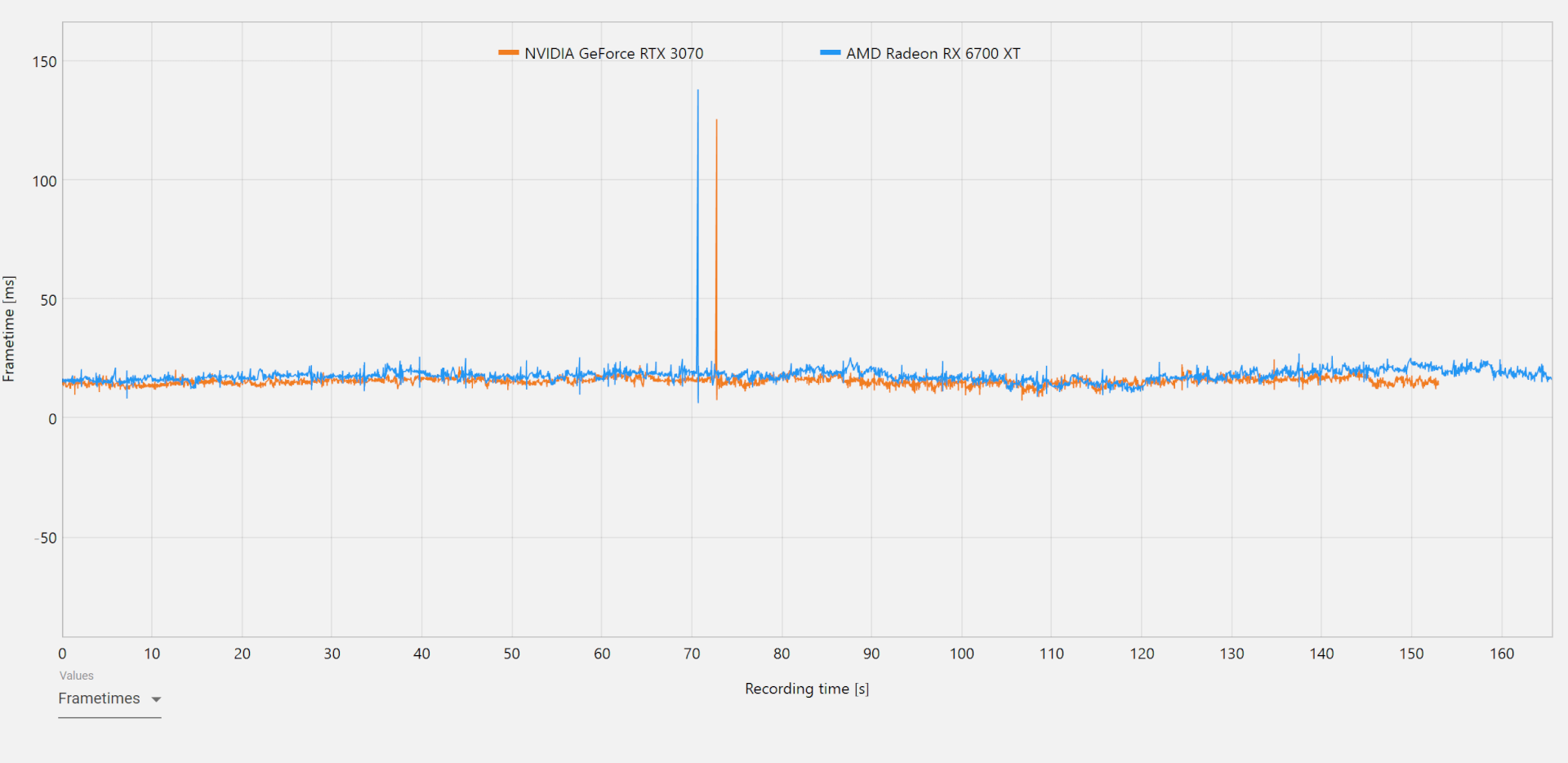
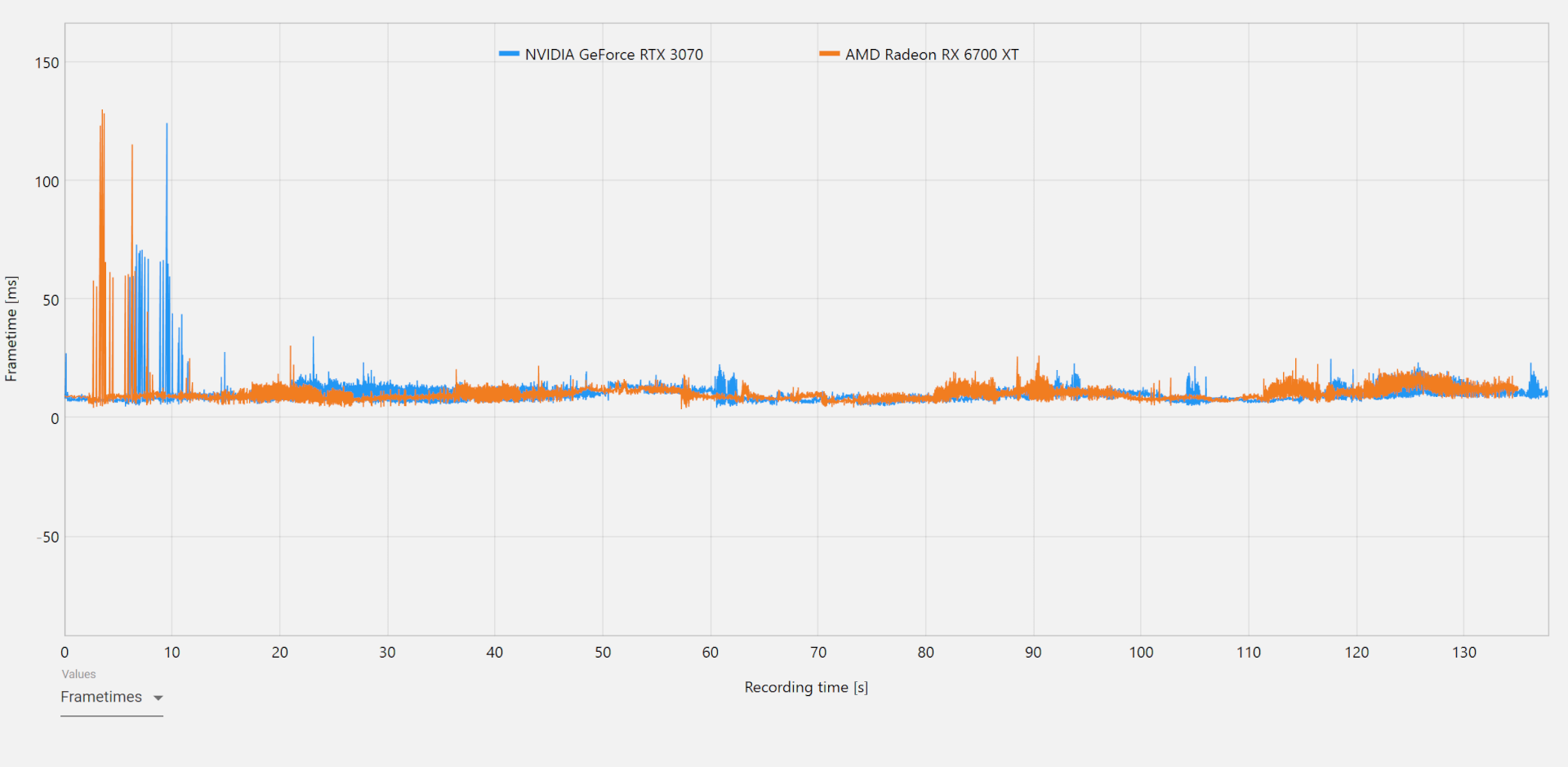
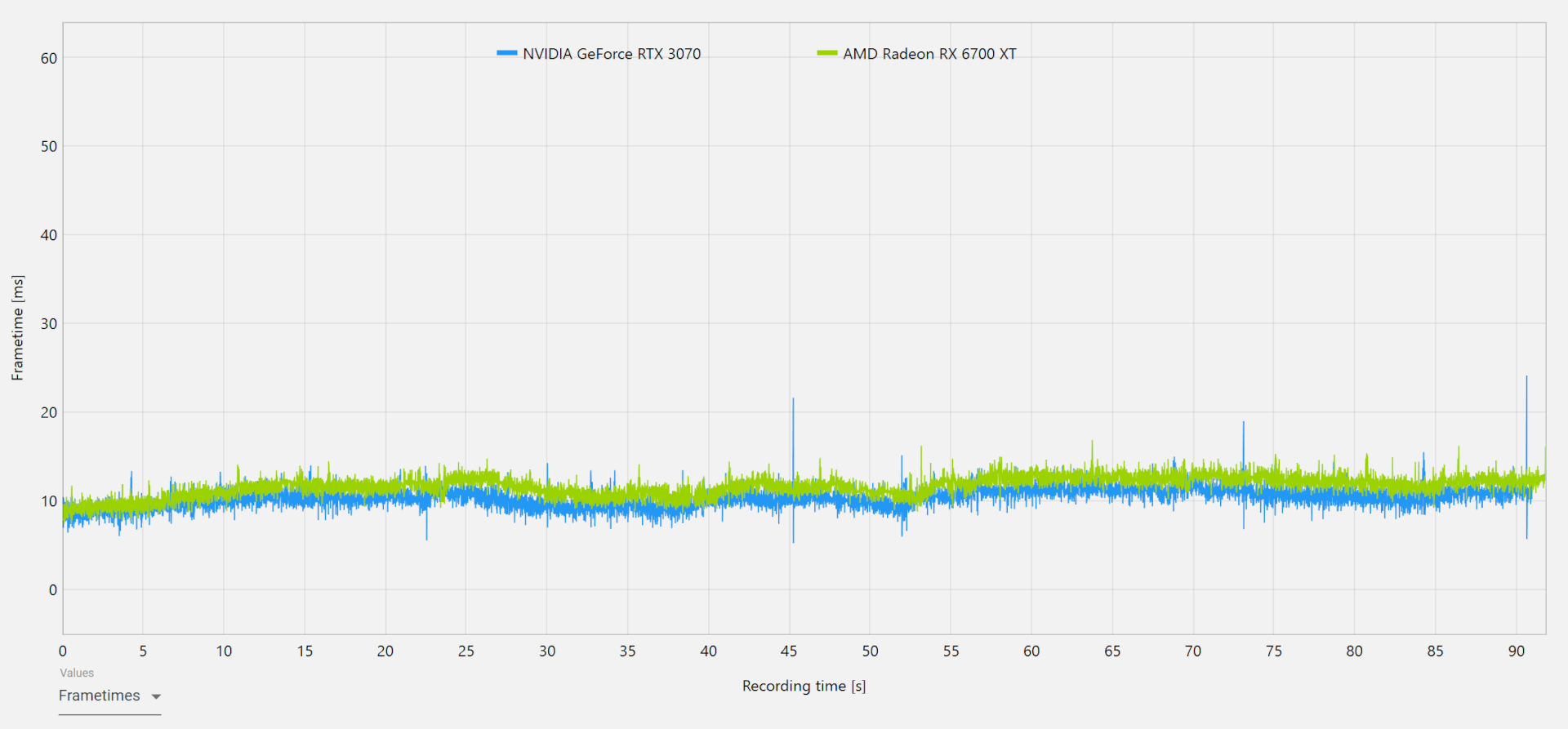
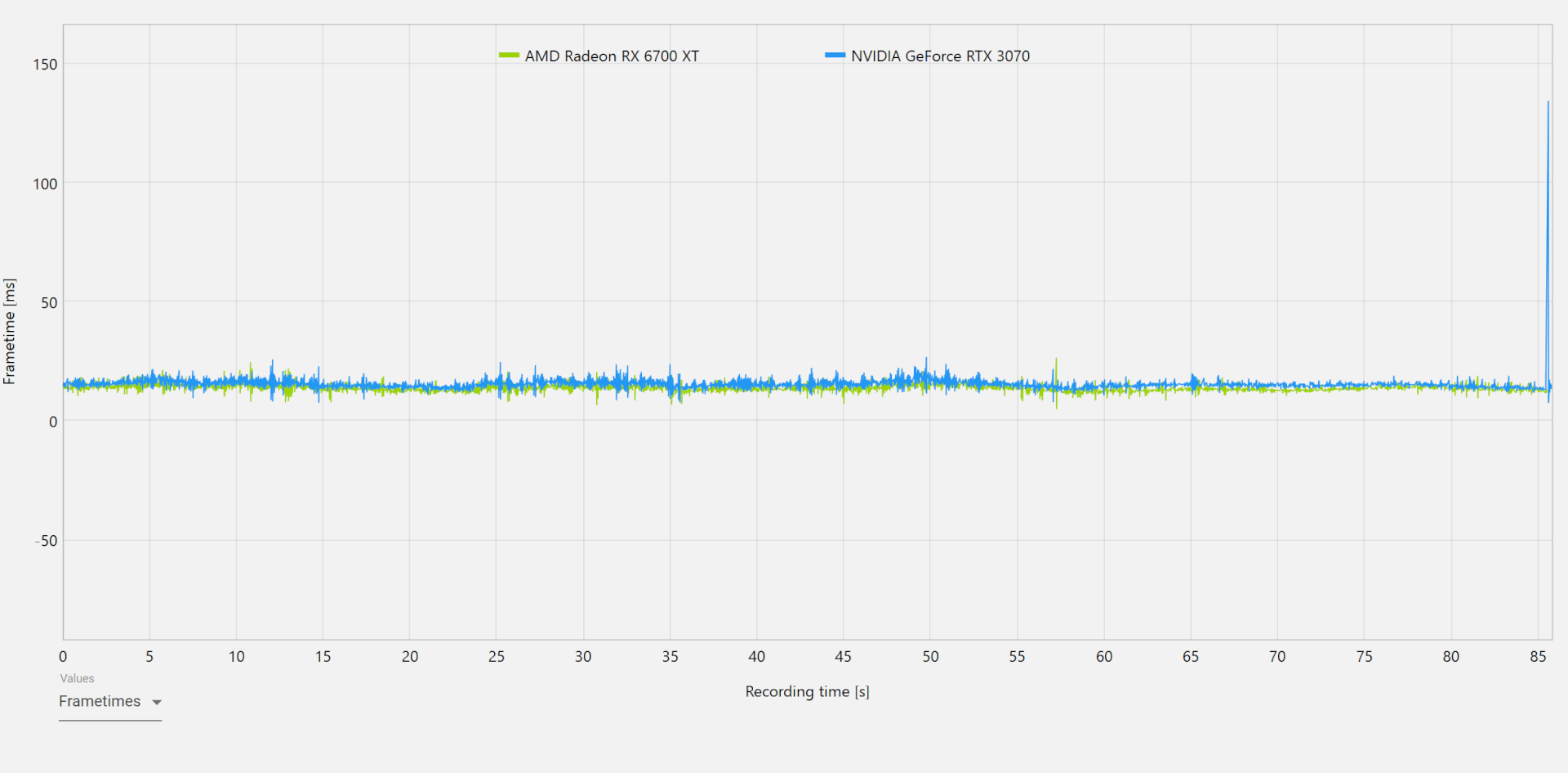
Generally, the frame times of the two cards are roughly very similar, although the RTX 3070 sees a few more spikes here and there. The notable examples being Hitman 3 and The Division 2, but these are hardly felt. Therefore, at the time it’s hard to see how the additional VRAM on the 6700 XT is an advantage, although that may change in the future.
Continued on the next page…
AMD Radeon RX 6700 XT vs NVIDIA RTX 3070: Ray-Tracing Performance
Ray-tracing is NVIDIA’s absolute stronghold. The use of a separate ray-tracing pipeline that can run in parallel with the primary shader and Tensor instructions significantly reduces the overhead in real-time ray-tracing. AMD, on the other hand, uses a hybrid approach which although has its advantages reduces the raster performance by offloading the BVH traversal to the SIMDs.
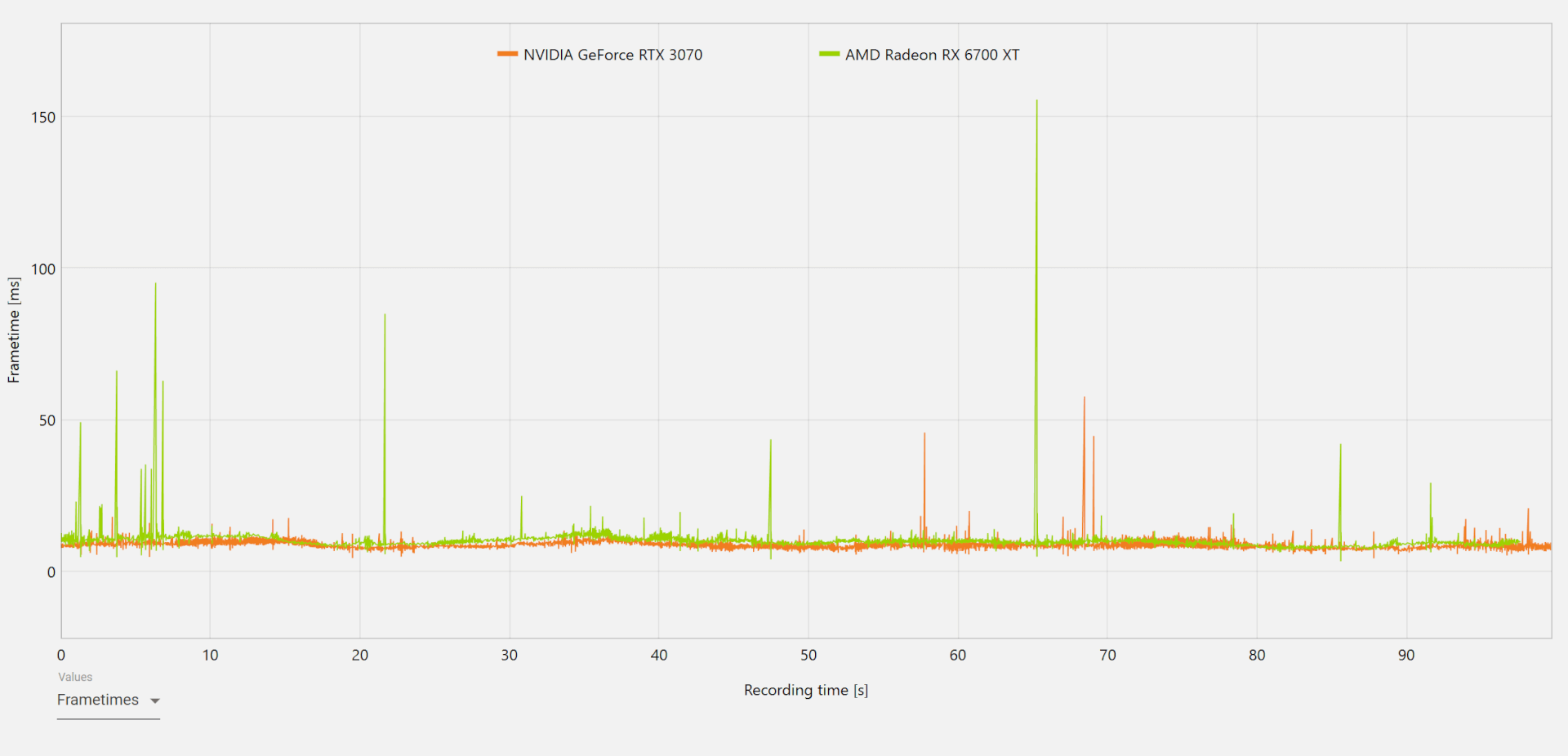
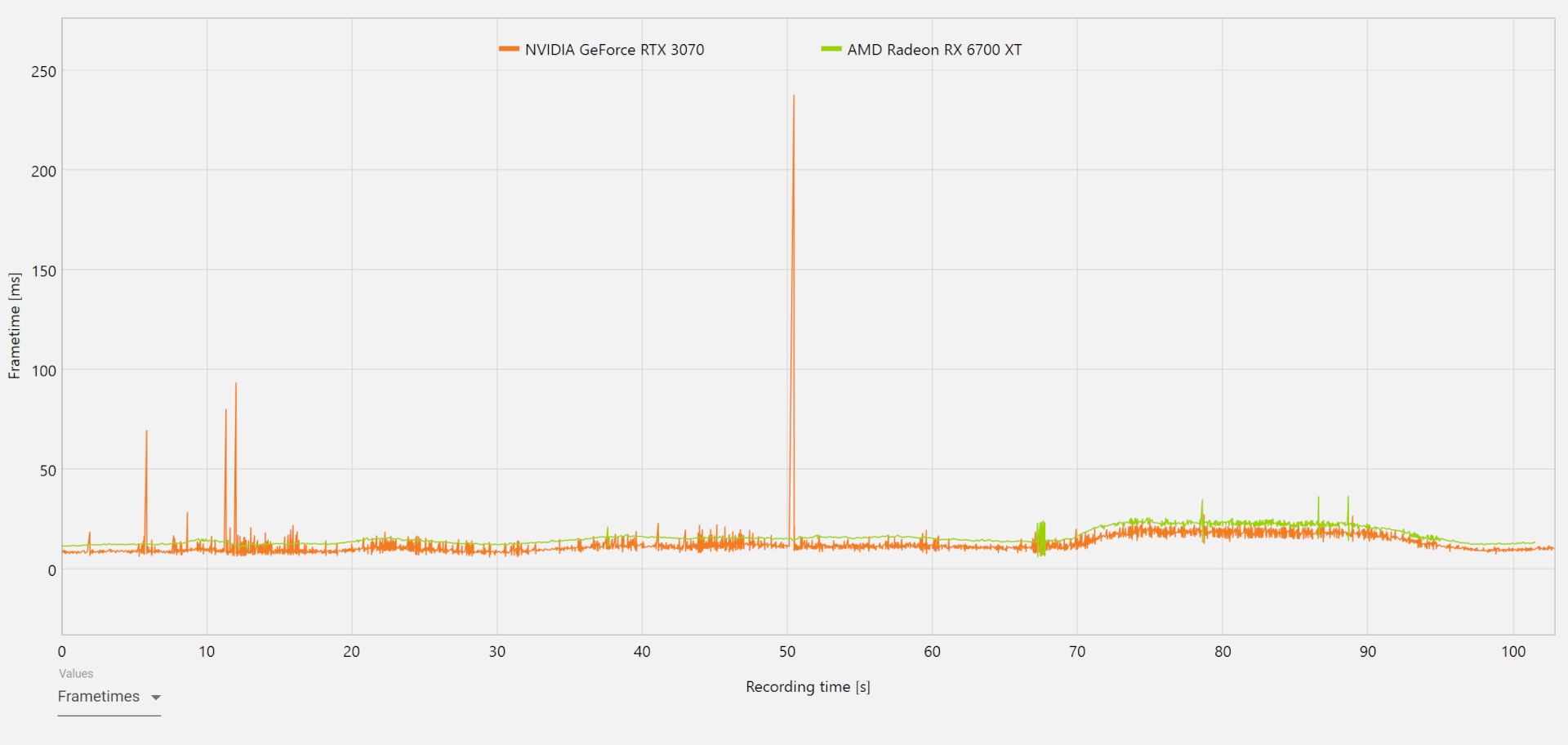
As expected, the Radeon RX 6700 XT is a fair bit slower than the GeForce RTX 3070 in ray-traced workloads. NVIDIA sponsored titles like Metro Exodus see a wider gulf of nearly 40% between the two while in neutral or Radeon sponsored games such as Godfall, the former is just 10-15% slower. This is without the use of DLSS which is one of NVIDIA’s major advantages. Luckily for AMD, there still aren’t that many ray-traced games around and the market for the same is relatively small.
Overclocking: Better than Big Navi?
The overclocking headroom with the Big Navi parts was rather non-existent. AMD promises better overclocking potential with the RX 6700 XT and we’re happy to confirm it. We were able to overclock the RX 6700 XT to 2,750MHz (+150) on the core clock and 2,150MHz (+150) on the memory. Interestingly, while few games got an ample performance uplift upon overclocking, others were mostly unaffected:
At 1080p, while AC: Valhalla, Shadow of the Tomb Raider, and Deus Ex see very little improvement upon overclocking, The Division 2 gains nearly 10 full frames.
At 1440p, all four games see a larger performance gain upon overclocking (~5%) which indicates that the GPU may be bandwidth starved here. Even upon canceling the core overclocking, the gains were mostly maintained which further corroborates this claim.
Conclusion: The Middle Child Syndrome
The Radeon RX 6700 XT is an interesting product. While it’s nearly on par with the RTX 3070 at 1080p, it falls behind at 1440p, all the while performing relatively poorly in ray-traced titles. Another important factor to keep in mind here is that we tested the reference model which is priced at $479. Most of the retail volume will be in the form of AIB cards which will cost at least $50 more, on par or more than the better performing RTX 3070. Then again, it’s likely that these SKUs will come with a higher boost and TDP target, potentially leveling with the latter.
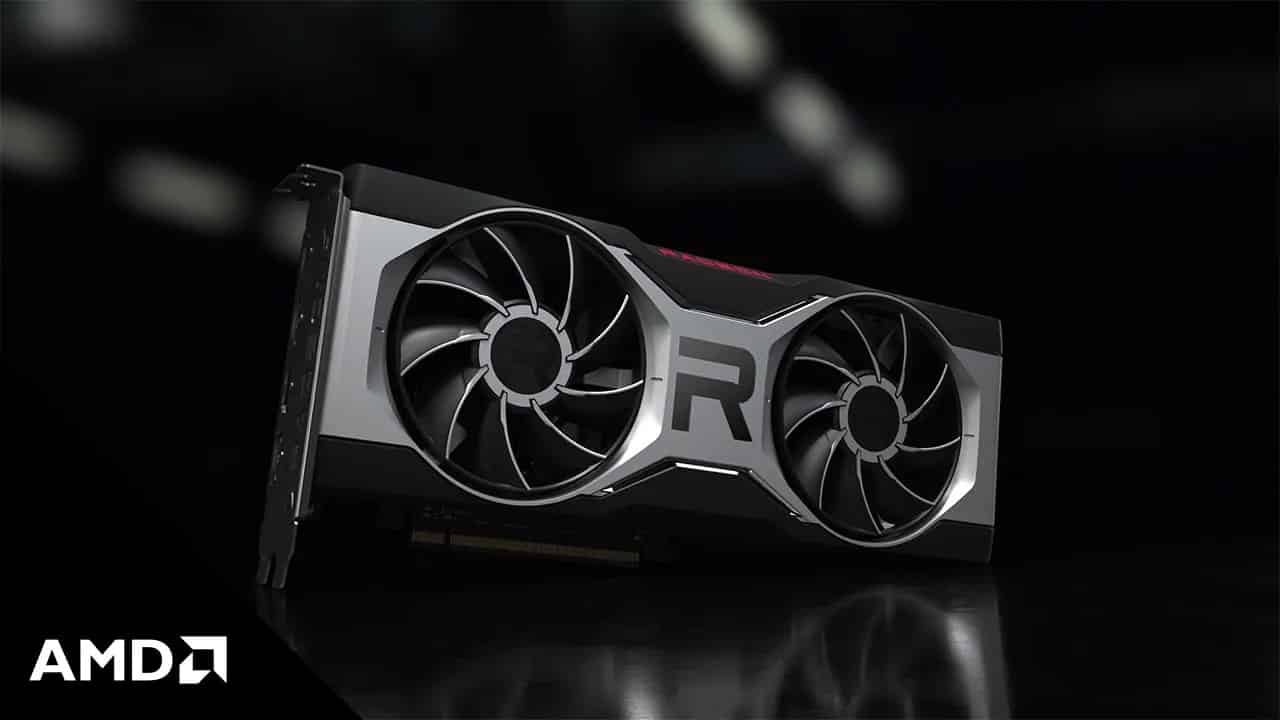
 AMD Radeon RX 7900 XT Drops Below $700 (-$210 Off), RX 6800 at $369 (-$310 Off)
AMD Radeon RX 7900 XT Drops Below $700 (-$210 Off), RX 6800 at $369 (-$310 Off) AMD Radeon RX 9900 XTX to Feature 18432 Cores/288 CUs: Replaces the Shelved 8900 XTX
AMD Radeon RX 9900 XTX to Feature 18432 Cores/288 CUs: Replaces the Shelved 8900 XTX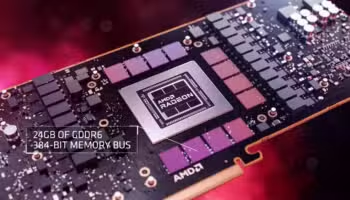 AMD Radeon RX 8900 XTX Specs: 13000+ Cores for the Cancelled RDNA 4 Flagship
AMD Radeon RX 8900 XTX Specs: 13000+ Cores for the Cancelled RDNA 4 Flagship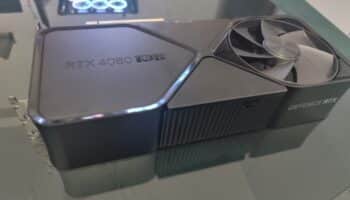 NVIDIA RTX 4080 vs 4080 Super vs 4090: 34 Benchmark Comparisons
NVIDIA RTX 4080 vs 4080 Super vs 4090: 34 Benchmark Comparisons